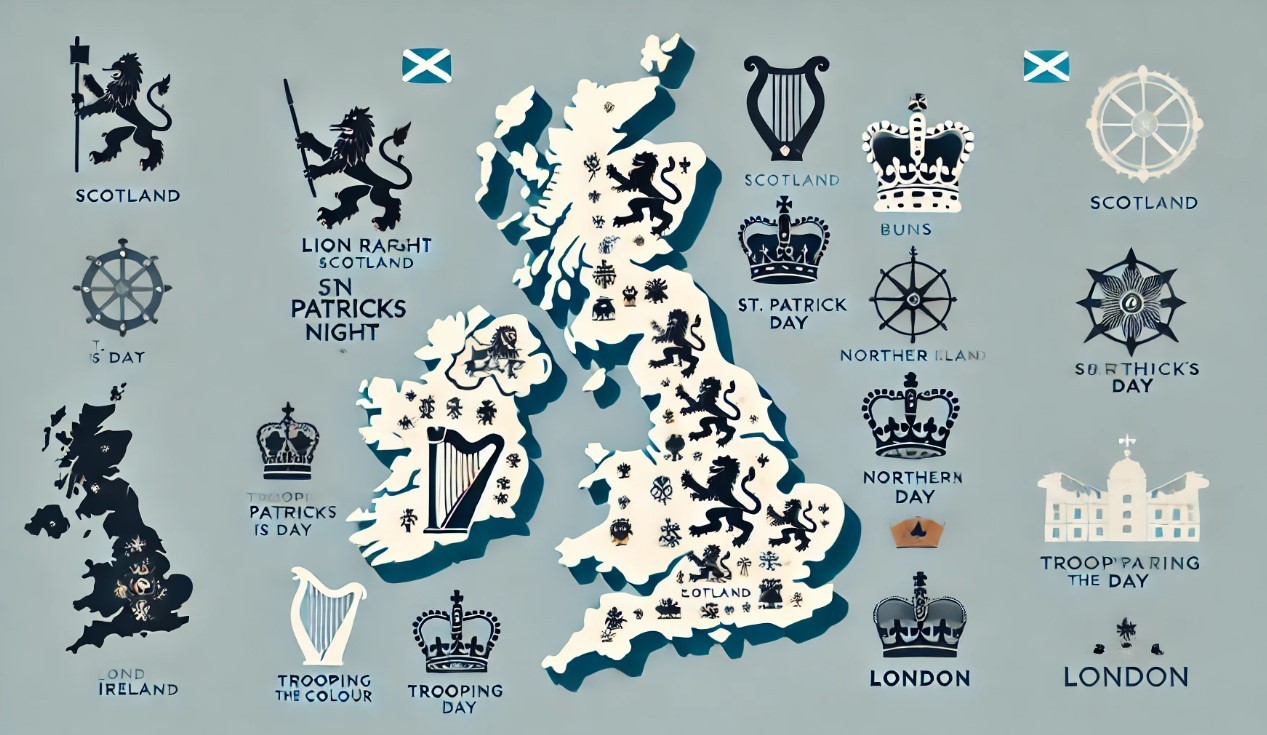How To Find The Stars and Planets on The Sky
 |
| How To Find The Stars And Planets On The Sky Knowinsiders.com |
| Table Of Content |
Finding Jupiter or the Southern Cross is easy if you know where to look — and that's easy too once you know how the movement of the Earth affects our view of the sky.
If you live in a city you might struggle to identify anything in the night sky besides the Moon — all those stars can look pretty random.
It can be tricky business, but with some helpful tools to equip you, you’ll be identifying planets in no time! Follow this guide to figure out if what you’re looking at is a planet or a star.
What Are Stars?
 |
| Photo: Freepik |
Stars are huge celestial bodies made mostly of hydrogen and helium that produce light and heat from the churning nuclear forges inside their cores. Aside from our sun, the dots of light we see in the sky are all light-years from Earth. They are the building blocks of galaxies, of which there are billions in the universe. It’s impossible to know how many stars exist, but astronomers estimate that in our Milky Way galaxy alone, there are about 300 billion.
A star is born
The life cycle of a star spans billions of years. As a general rule, the more massive the star, the shorter its life span.
Birth takes place inside hydrogen-based dust clouds called nebulae. Over the course of thousands of years, gravity causes pockets of dense matter inside the nebula to collapse under their own weight. One of these contracting masses of gas, known as a protostar, represents a star’s nascent phase. Because the dust in the nebulae obscures them, protostars can be difficult for astronomers to detect.
As a protostar gets smaller, it spins faster because of the conservation of angular momentum—the same principle that causes a spinning ice skater to accelerate when she pulls in her arms. Increasing pressure creates rising temperatures, and during this time, a star enters what is known as the relatively brief T Tauri phase.
Millions of years later, when the core temperature climbs to about 27 million degrees Fahrenheit (15 million degrees Celsius), nuclear fusion begins, igniting the core and setting off the next—and longest—stage of a star’s life, known as its main sequence.
Most of the stars in our galaxy, including the sun, are categorized as main sequence stars. They exist in a stable state of nuclear fusion, converting hydrogen to helium and radiating x-rays. This process emits an enormous amount of energy, keeping the star hot and shining brightly.
All that glitters
Some stars shine more brightly than others. Their brightness is a factor of how much energy they put out–known as luminosity–and how far away from Earth they are. Color can also vary from star to star because their temperatures are not all the same. Hot stars appear white or blue, whereas cooler stars appear to have orange or red hues.
By plotting these and other variables on a graph called the Hertzsprung-Russell diagram, astronomers can classify stars into groups. Along with main sequence and white dwarf stars, other groups include dwarfs, giants, and supergiants. Supergiants may have radii a thousand times larger than that of our own sun.
Stars spend 90 percent of their lives in their main sequence phase. Now around 4.6 billion years old, Earth’s sun is considered an average-size yellow dwarf star, and astronomers predict it will remain in its main sequence stage for several billion more years.
As stars move toward the ends of their lives, much of their hydrogen has been converted to helium. Helium sinks to the star's core and raises the star's temperature—causing its outer shell of hot gases to expand. These large, swelling stars are known as red giants. But there are different ways a star’s life can end, and its fate depends on how massive the star is.
The red giant phase is actually a prelude to a star shedding its outer layers and becoming a small, dense body called a white dwarf. White dwarfs cool for billions of years. Some, if they exist as part of a binary star system, may gather excess matter from their companion stars until their surfaces explode, triggering a bright nova. Eventually all white dwarfs go dark and cease producing energy. At this point, which scientists have yet to observe, they become known as black dwarfs.
Big bang
Massive stars eschew this evolutionary path and instead go out with a bang—detonating as supernovae. While they may appear to be swelling red giants on the outside, their cores are actually contracting, eventually becoming so dense that they collapse, causing the star to explode. These catastrophic bursts leave behind a small core that may become a neutron star or even, if the remnant is massive enough, a black hole.
Because certain supernovae have a predictable pattern of destruction and resulting luminosity, astronomers are able to use them as “standard candles,” or astronomical measuring tools, to help them measure distances in the universe and calculate its rate of expansion.
What Are Planets?
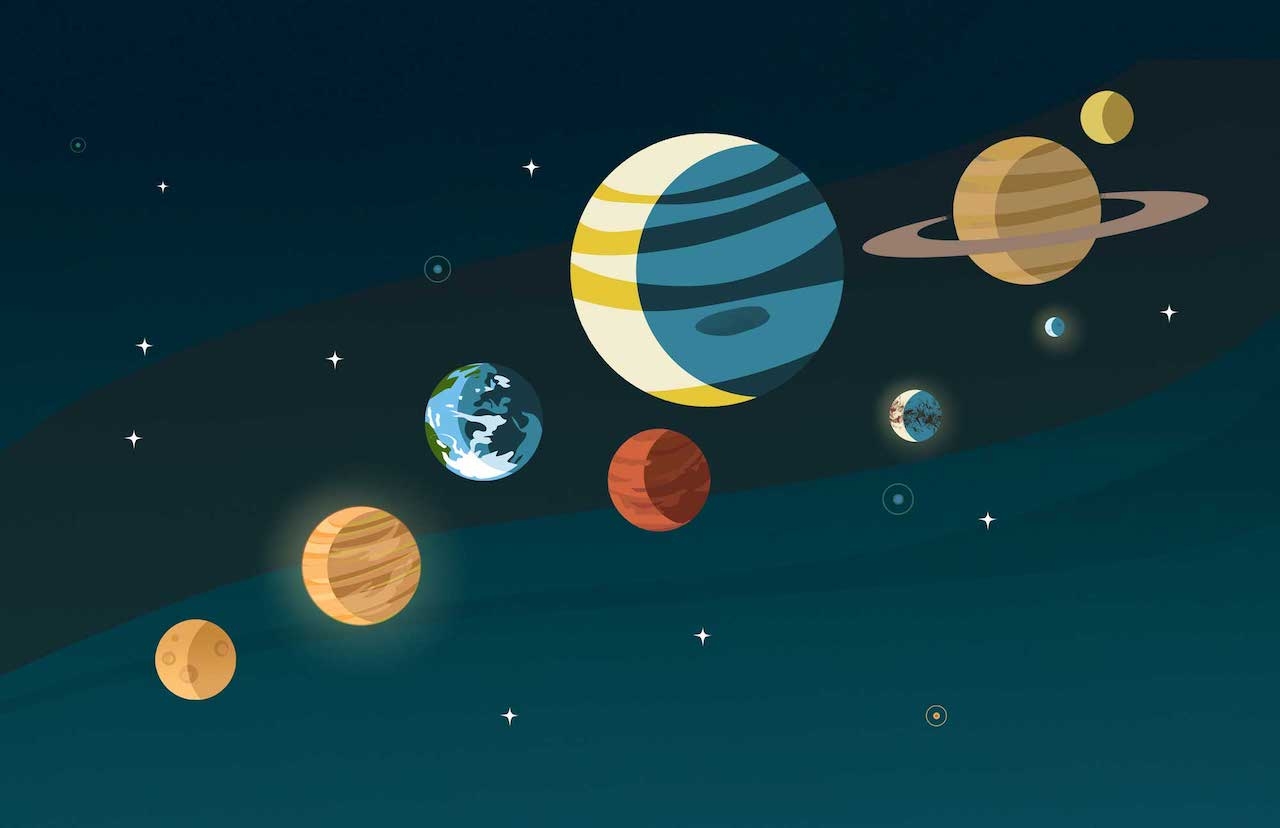 |
| Photo: NASA |
A planet (from Ancient Greek ἀστὴρ πλανήτης (astēr planētēs), meaning “wandering star”) is an astronomical object orbiting a star or stellar remnant that is massive enough to be rounded by its own gravity, is not massive enough to cause thermonuclear fusion, and has cleared its neighbouring region of planetesimals.
The term planet is ancient, with ties to history, science, mythology, and religion. The planets were originally seen by many early cultures as divine, or as emissaries of deities. As scientific knowledge advanced, human perception of the planets changed, incorporating a number of disparate objects. In 2006, the International Astronomical Union (IAU) officially adopted a resolution defining planets within the Solar System. This definition has been both praised and criticized and remains disputed by some scientists because it excludes many objects of planetary mass based on where or what they orbit. While eight of the planetary bodies discovered before 1950 remain “planets” under the modern definition, some celestial bodies, such as Ceres, Pallas, Juno, Vesta (each an object in the Solar asteroid belt), and Pluto (the first-discovered trans-Neptunian object), that were once considered planets by the scientific community are no longer viewed as such.
The planets were thought by Ptolemy to orbit the Earth in deferent and epicycle motions. Although the idea that the planets orbited the Sun had been suggested many times, it was not until the 17th century that this view was supported by evidence from the first telescopic astronomical observations, performed by Galileo Galilei. By careful analysis of the observation data, Johannes Kepler found the planets’ orbits were not circular but elliptical. As observational tools improved, astronomers saw that, like Earth, the planets rotated around tilted axes, and some shared such features as ice caps and seasons. Since the dawn of the Space Age, close observation by probes has found that Earth and the other planets share characteristics such as volcanism, hurricanes, tectonics, and even hydrology.
Planets are generally divided into two main types: large, low-density gas giants and smaller, rocky terrestrials. Under IAU definitions, there are eight planets in the Solar System. In order of increasing distance from the Sun, they are the four terrestrials, Mercury, Venus, Earth, and Mars, then the four gas giants, Jupiter, Saturn, Uranus, and Neptune. Six of the planets are orbited by one or more natural satellites.
Stargazing: Finding the Stars and Constellations
Thousands of years ago, people spent hours gazing at the night sky. They found that by connecting the stars as if they were dots, patterns emerged that resembled animals, people, and things. Today, we call star patterns “constellations.”
Eventually, 88 of these star patterns were identified. The patterns helped people navigate on land and by sea as well as tell time, appearing in different parts of the sky depending on the day and year. (The stars don’t move. Earth moves, rotating on its axis once every 24 hours and revolving around the Sun once every year.)
The Big Dipper
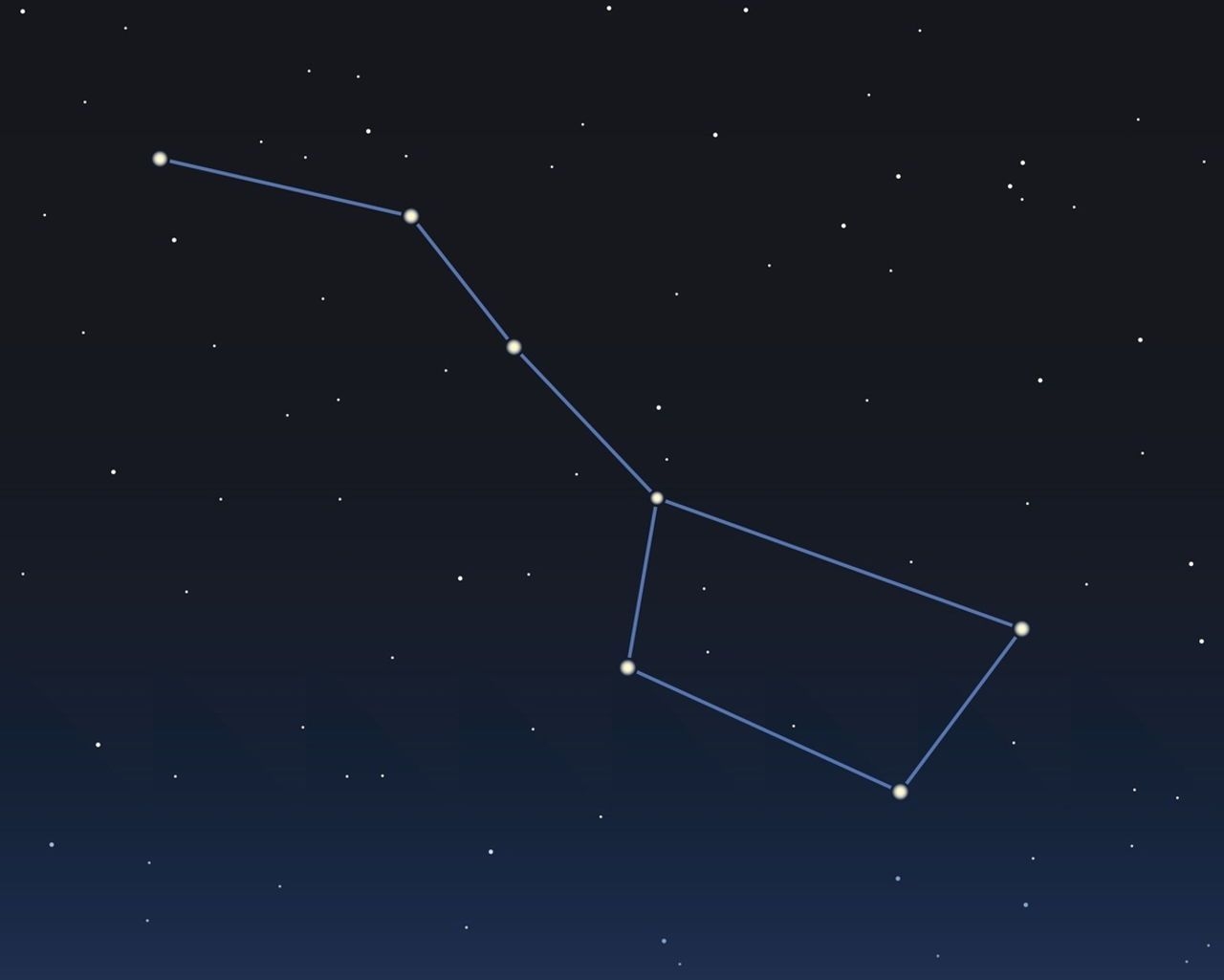 |
| Photo: THEPlanets |
The big dipper is not a constellation, but an asterism (a familiar group of stars located within a constellation).
Look for seven major stars: four in the “bowl” and three in the “handle.” The two stars on the outside of the bowl are called the “pointer” stars. They point to Polaris, a bright star that is also called the North Star because with it you can figure out which way is north.
The Big Dipper is one of the easiest star patterns to locate in Earth’s sky. It’s visible just about every clear night in the Northern Hemisphere, looking like a big dot-to-dot of a kitchen ladle. As Earth spins, the Big Dipper and its sky neighbor, the Little Dipper, rotate around the North Star, also known as Polaris. From the northern part of the Northern Hemisphere, the Big and Little Dippers are in the sky continuously, always above your horizon, circling endlessly around Polaris. Given an unobstructed horizon, latitudes north of the 35th parallel (the approximate location of the Mediterranean Sea and Tennessee’s southern border) can expect to see the Big Dipper at any hour of the night for all days of the year.
If you can spot the Big Dipper, then you’re on your way to finding the Little Dipper and the North Star, Polaris, too.
Just remember the old saying spring up and fall down. On spring and summer evenings in the Northern Hemisphere, the Big Dipper shines at its highest in the evening sky. On autumn and winter evenings, the Big Dipper sweeps closer to the horizon.
To find north:
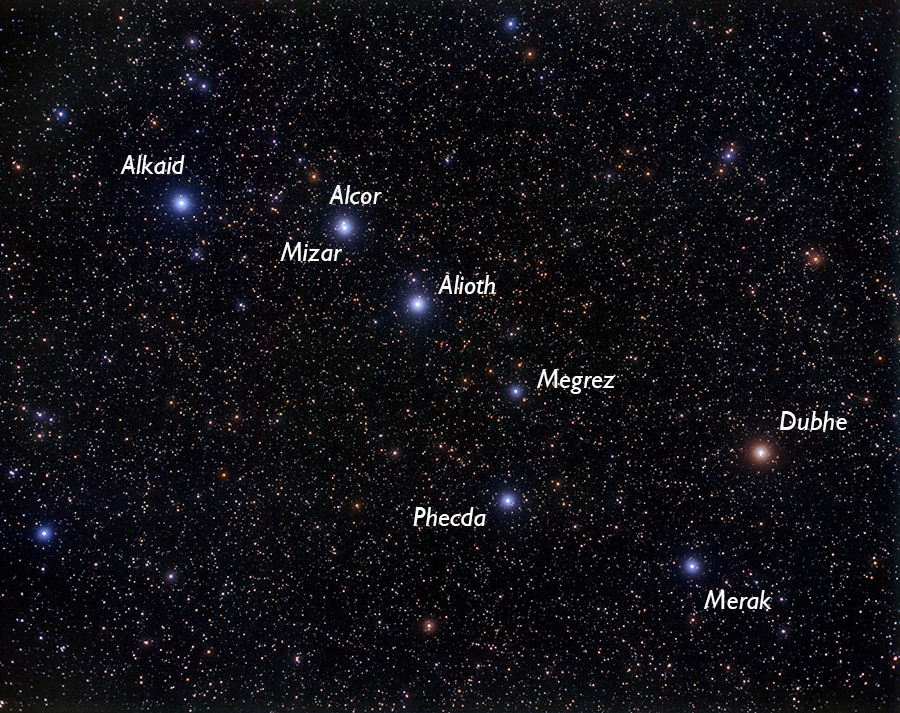 |
| Photo: Sky & Telescopes |
→ Find the Big Dipper.
→ Find the pointer stars.
→ Find Polaris.
→ Look straight up.
→ Turn your body towards Polaris.
→ Now, you’re facing north.
Ursa Major, the Great Bear
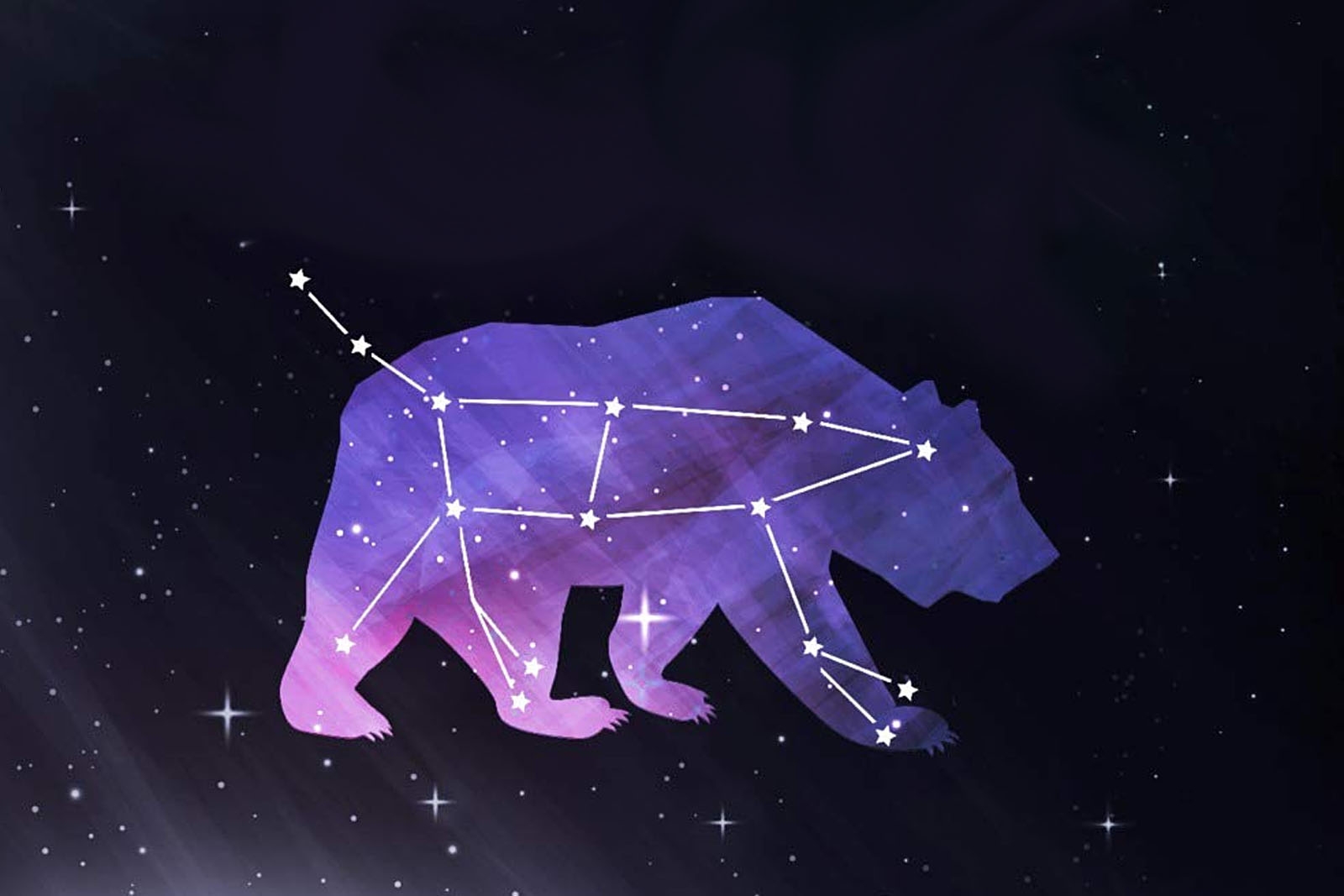 |
| Photo: Little Astronomy |
If you find the Big Dipper, you have found the Great Bear: The Dipper’s handle is the Bear’s tail.
Legends about the Great Bear abound. Ancient Greeks and Romans believed that a mythological king grabbed its tail, swung it around, and swung it into the sky to whirl around the North Pole forever. Some Native Americans believed that the three tail stars were hunters chasing the Bear.
Ursa Major — the great bear — is always above the horizon in the northern latitudes, but the best time to see it is in the spring when its high above the northeastern horizon. Ursa Major is best known as the home of the Big Dipper.
Ursa Major is the head of the Ursa Major family of constellations, which contains nine other constellations, including Boötes, Draco, and Ursa Minor.
Ursa Major is visible to observers at latitudes between +90° (the North Pole) and -30°. Northern Hemisphere observers can see Ursa Major all year long (it is a circumpolar constellation) while it’s only partially visible to northern Southern Hemisphere observers.
The constellation of Ursa Major is bordered by the constellations Boötes, Camelopardalis, Canes Venatici, Coma Berenices, Draco, Leo, Leo Minor, and Lynx.
Of all the star patterns in the sky, the Big Dipper is the most universally recognized. The dipper's seven bright stars form a portion of the great bear. It's hard to see the rest of the bear, especially from light-polluted cities.
After you locate the dipper, look at the two stars that mark the outer edge of its bowl. Now connect these two stars, then extend the line above the dipper's bowl. Polaris, the north star, lies along this line, about five times the distance between the two pointers. No matter where the Big Dipper is in our sky, those two stars always point to Polaris.
Ursa Minor, the Little Bear
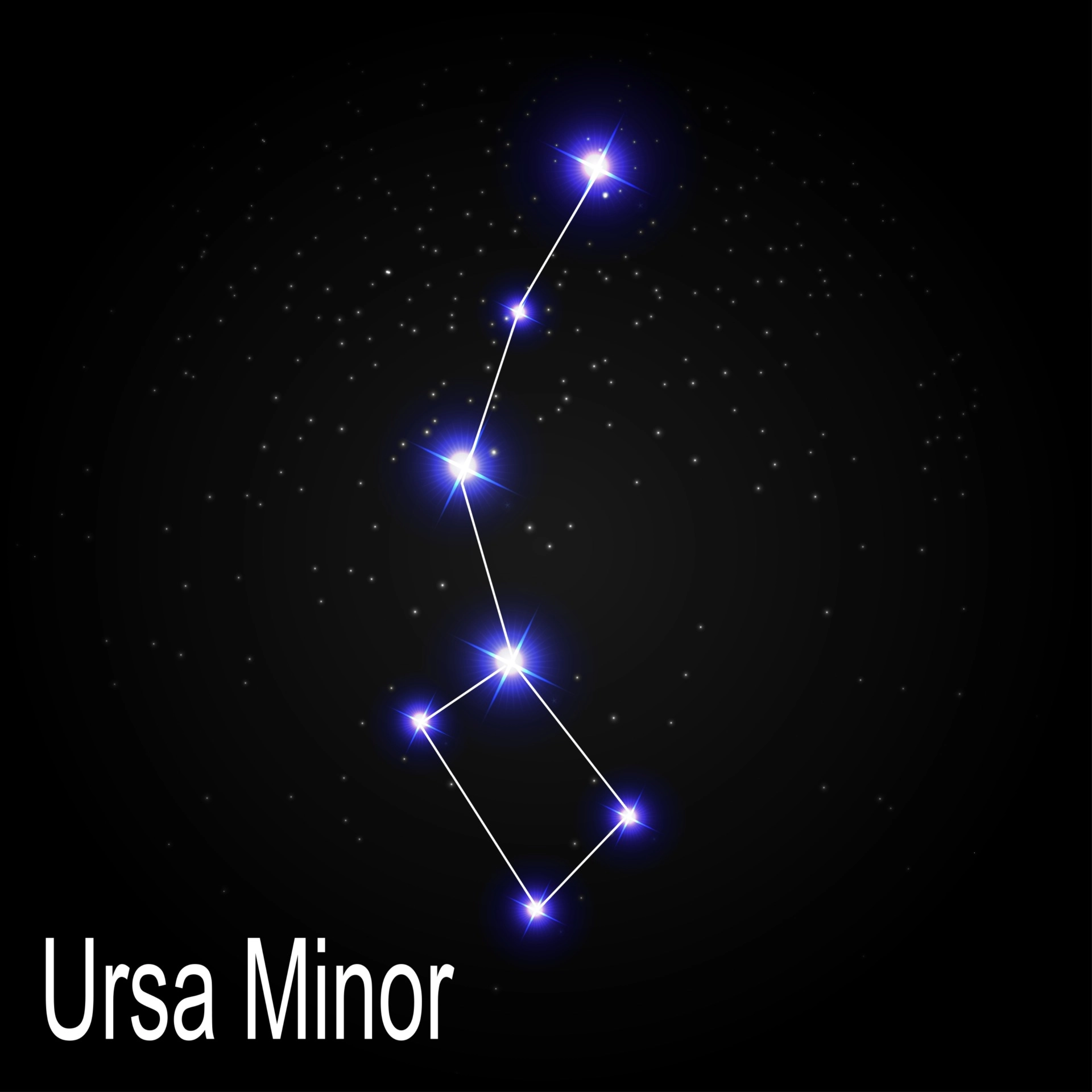 |
| Photo: Vecteezy |
The seven main stars that form Ursa Minor are also known as the Little Dipper, whereas the seven brightest stars of Ursa Major constitute the famous pattern known as the Big Dipper.
Interestingly, the Big and Little Dippers are arranged so that when one is upright, the other is upside down. In addition, their handles appear to extend in opposite directions. The Big Dipper is by far the brighter of the two, appearing as a long-handled pan, while the Little Dipper resembles a dim soup ladle.
Astronomy neophytes sometimes mistake the Pleiades star cluster for the Little Dipper because the brightest Pleiades stars resemble a tiny skewed dipper. But in reality, most people have never seen the Little Dipper, because most of its stars are too dim to be seen through light-polluted skies.
If you ever wanted to judge the quality of your night sky, you need only look to the bowl of the Little Dipper. The four stars that comprise the bowl run in brightness from second to fifth magnitude.
The magnitude system has its origins in the classification by brightness of about 1,000 stars carried out by the Greek astronomer Hipparchus in the second century B.C. The average of the 21 brightest stars in the sky is defined as first magnitude, while the faintest stars normally visible to the unaided eye on a clear, dark night are said to be of sixth magnitude.
The magnitude scale is logarithmic. So, a difference of one on the magnitude scale corresponds to 2.512 times the amount of brightness. That is, second-magnitude stars are 2.512 times brighter than third-magnitude stars, and 6.31 (2.512 x 2.512) times brighter than fourth-magnitude stars, and so on.
The brightest star in the Little Dipper's bowl is Kochab, a second-magnitude star with an orange hue. The next brightest goes by an old Arabic-derived name, Pherkad, the "Dim One of the Two Calves." Pherkad is indeed dimmer than Kochab, shining at third magnitude.
The two other stars that complete the bowl are of fourth and fifth magnitude. So, if you can readily see all four stars in the bowl, you've got yourself a pretty dark sky. Unfortunately, thanks to the spread of light pollution in recent years, only Kochab and Pherkad are usually visible from most city and suburban sites, meaning the quality of the sky ranks from fair to poor in those locations.
Orion, the Hunter
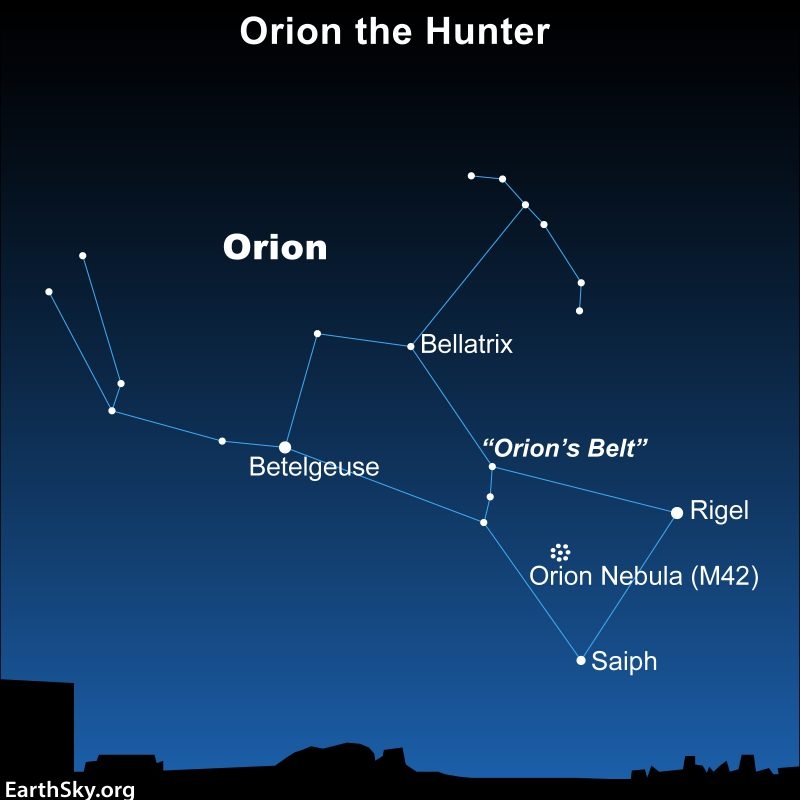 |
| Photo: EarthSky |
As you learn more about the night sky, you've undoubtedly noticed three stars, equidistant from one another, that shine brightly as they pass overhead each night between October and March. These three stars are Orion's Belt, part of the constellation Orion, the Hunter. To many ancient people, the pattern of Orion looked like the figure of a human with an arrow, and the three stars were the belt around the figure's waist.
Each star has its own name: Mintaka, Alnilam and Alnitak. Though they are different types of stars, distant from Earth, and distant from one another, our perspective makes them appear as an asterism (a shape made of stars that aren't officially a constellation) that is welcomingly familiar to anyone who enjoys stargazing. All three stars are several times larger and brighter than our sun.
Due to its bright, recognizable form, Orion's Belt has been one of the most consistently documented asterisms in the night sky throughout human history.
This is easiest to find in the winter. Look for three bright stars in a line—these are Orion’s belt.
The two stars north of this are Orion’s shoulders. One of Orionthese is Betelgeuse (“BEETLE-juice”), which is a giant red star. The two brighter stars to the south are his legs.
Ancient people used Orion to predict the seasons: If it appeared at midnight, the grapes were ready to harvest. If it appeared in the morning, summer was beginning. If it appeared in the evening, winter had arrived.
Canis Major, the Great Dog
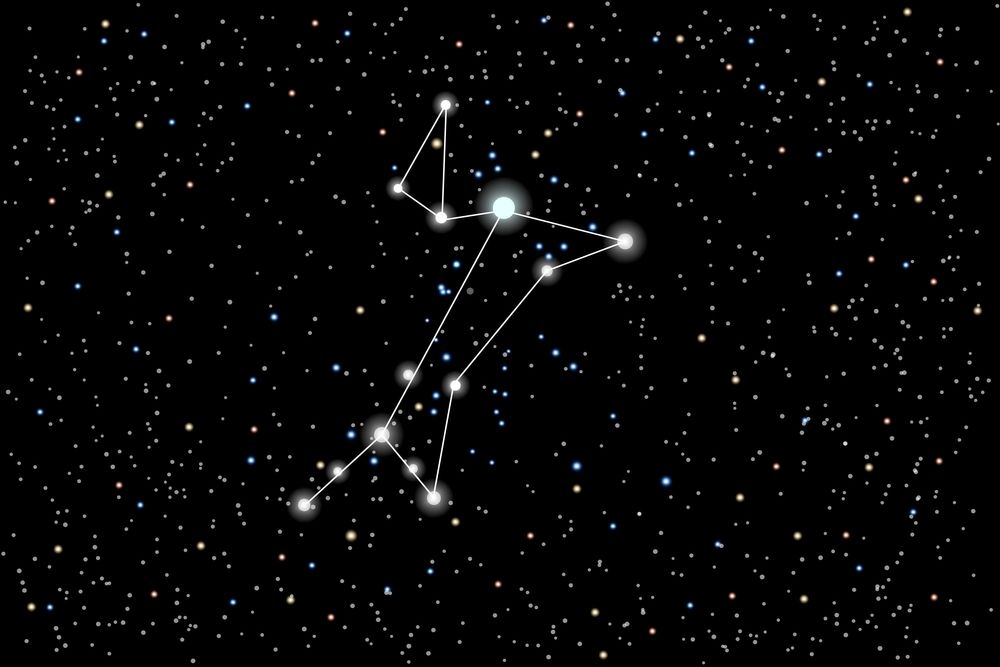 |
| Photo: Kidadl |
Orion, of course, is the brightest of all the constellations, with a rectangular array of four bright stars outlining his torso and three bright stars positioned diagonally to mark his belt. Surrounding Orion are several star patterns, not quite so bright, but each one containing at least one object that attracts attention.
Although Orion is the brightest constellation, it does not contain the brightest star in the night sky. To find that star, take Orion's belt and stretch an imaginary line through it, down and to the left. Eventually, you will come to a dazzling, blue-white jewel: Sirius, the Dog Star, and the brightest star of the constellation Canis Major, the larger of the two hunting dogs that belong to Orion.
According to the ancient Greeks, Canis Major was an incredibly fast runner. Known as "Laelaps," the dog supposedly held a race against a fox who was deemed to be the fastest creature on Earth, with the dog winning handily. Zeus placed the canine among the stars to celebrate the animal's victory.
This constellation is named for the larger of Orion’s two hunting dogs (the other, Canis Minor, has only two stars).
To find Canis Major:
• Imagine a straight line through Orion’s belt.
• Move your eyes left (south) until you come to a very bright star—that’s Sirius, the nose of the dog.
• Look farther south to find a triangle of stars that marks the dog’s hindquarters.
Ancient Egyptians called Sirius “the Nile Star” because it always appeared in the sky right before summer began and the waters of the River Nile began to flood. In medieval Europe, people thought that a combination of light from the Sun and Sirius caused the hot and humid “dog days” of summer.
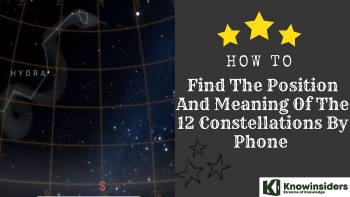 How To Find The Position of 12 Zodiac Signs By SmarthPhone How To Find The Position of 12 Zodiac Signs By SmarthPhone Each person will have a constellation representing themselves, in the galaxy, there are quite a few constellations for you to observe. So how can you ... |
Finding the Planets in the Night Sky
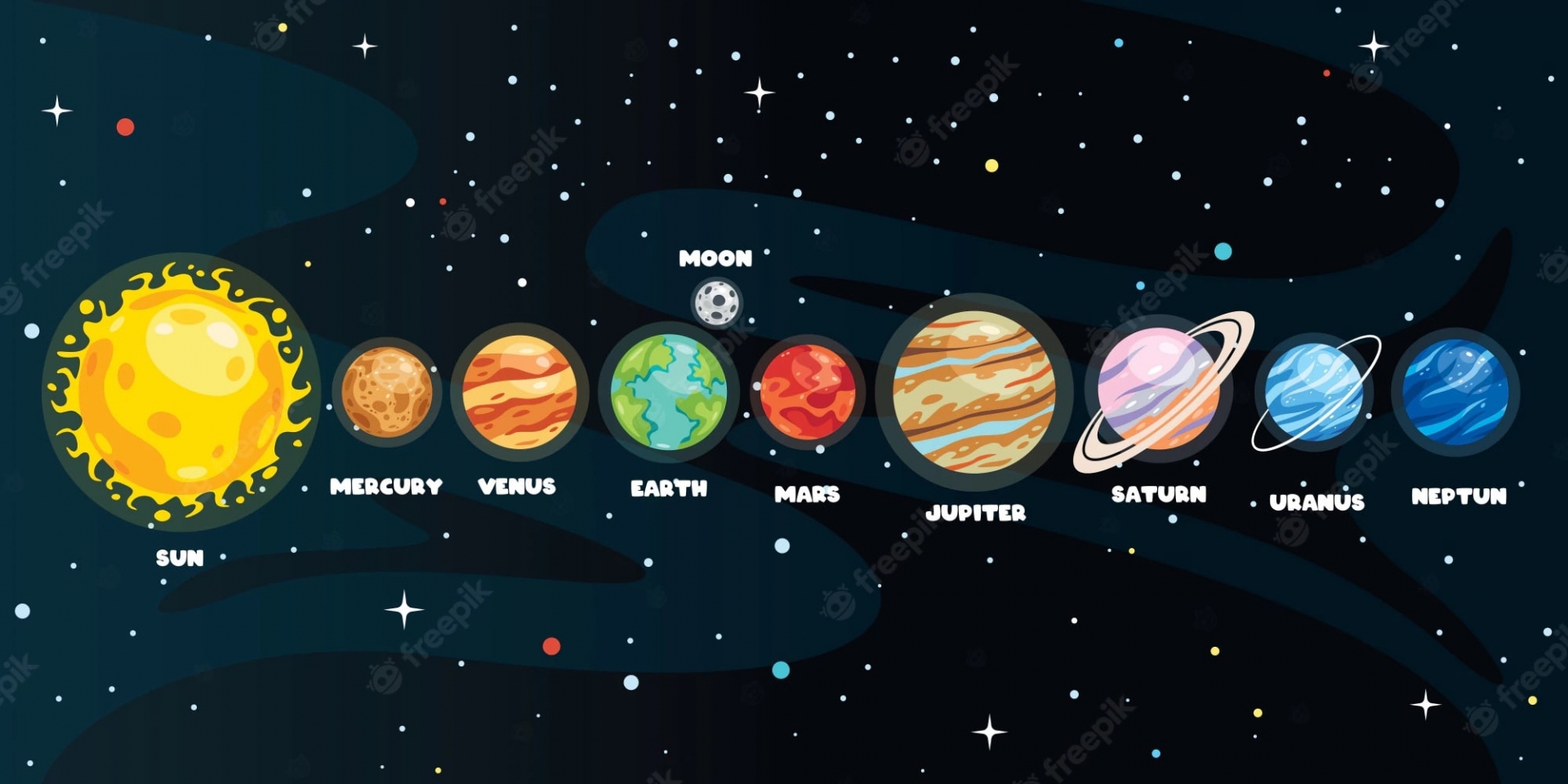 |
| Photo: Freepik |
The first thing you need to do is find the ecliptic, the imaginary line that marks the path the Sun takes across the sky.
Since all of the Solar System’s major planets orbit the Sun in roughly the same plane, the ecliptic also marks the path of the planets. You’ll always find all of the planets near that line.
Is it bright, but on the wrong side of the sky to the ecliptic? Then it can’t be a planet.
Where is the ecliptic in the night sky?
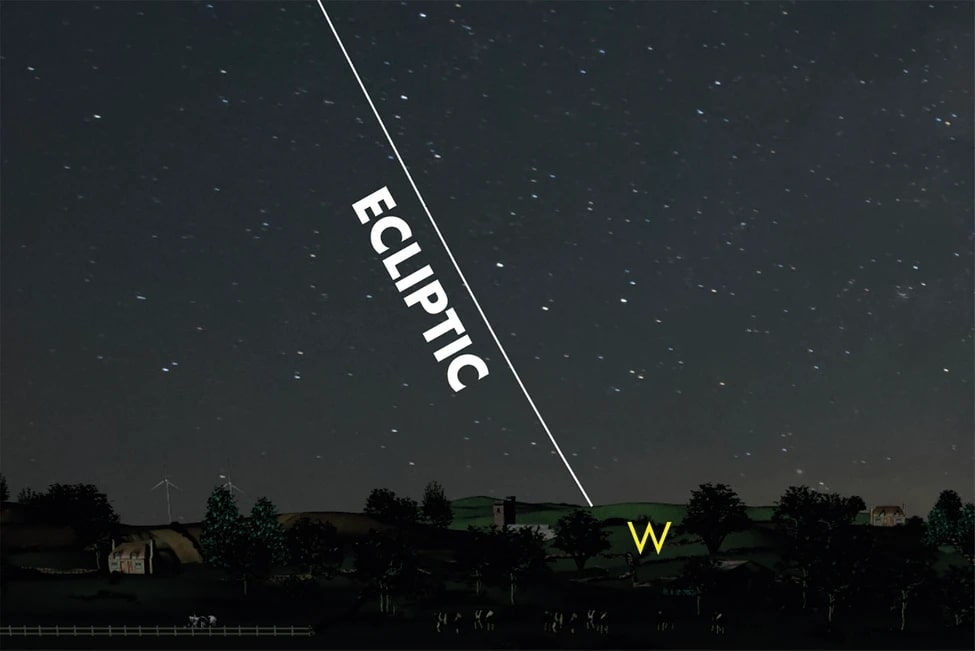 |
| Photo: Sky At Night Magazine |
To find the ecliptic, carefully make a note of the Sun as it crosses the sky.
Pay attention to where it rises and sets, and where it is during the day. How high above the trees and the rooftops across the street is it, for example?
Once you have a feel for the path the Sun travels on during the day, use your imagination to try to map its path onto the night-time sky.
Keep an eye on the Moon, too. Its orbit around Earth tilts by about 5° compared to the ecliptic. That means the ecliptic is always within 5° of the Moon.
That’s about the width of three of your fingers held up at the end of your outstretched arm.
Finally, remember that the ecliptic does not remain in the same place year round, something you can imagine by remembering that the Sun gets higher in the sky during the summer months than it does in the winter.
How to find the planets among the stars
Once you know roughly where to look, you can work out which objects are planets.
In the same way that a small tree outside your window looks bigger than a larger tree on a distant hillside, planets look bigger than the much larger and much more distant stars.
This apparent size difference gives them a subtle disc shape, which often becomes easier to see the more you look for it.
Also, because their light comes to us from many points – not just one as starlight does – they usually don’t appear to twinkle.
Many planets have distinct hues; in some cases, they can shine much brighter than any star.
Mercury and Venus are inferior planets. That doesn’t mean they are uninteresting, only that they orbit closer to the Sun than Earth does.
From our perspective, they are always relatively close to the Sun in the sky. Venus is never more than 47° away from it, which is about the width of five fists held out at arm’s length.
Mercury is closer still, never more than 28° away. This means they always rise shortly before the Sun or set shortly after it. They’ll never soar high overhead late at night.
Since Mercury is very small, speedy, and close to the Sun, it’s particularly difficult to see. It’s only visible for a short time, most often in glowing twilight, so you’ll need to be quick to spot it.
As challenging as it is, Mercury is bright enough to stand boldly against skies too bright for most stars.
If you see something yellowish staring back at you through the dawn or dusk, there’s a chance it could be Mercury.
Fellow inferior planet Venus is a stark contrast: a beautiful white colour and bright to the point of being unmistakable, its peak magnitude –4.4.
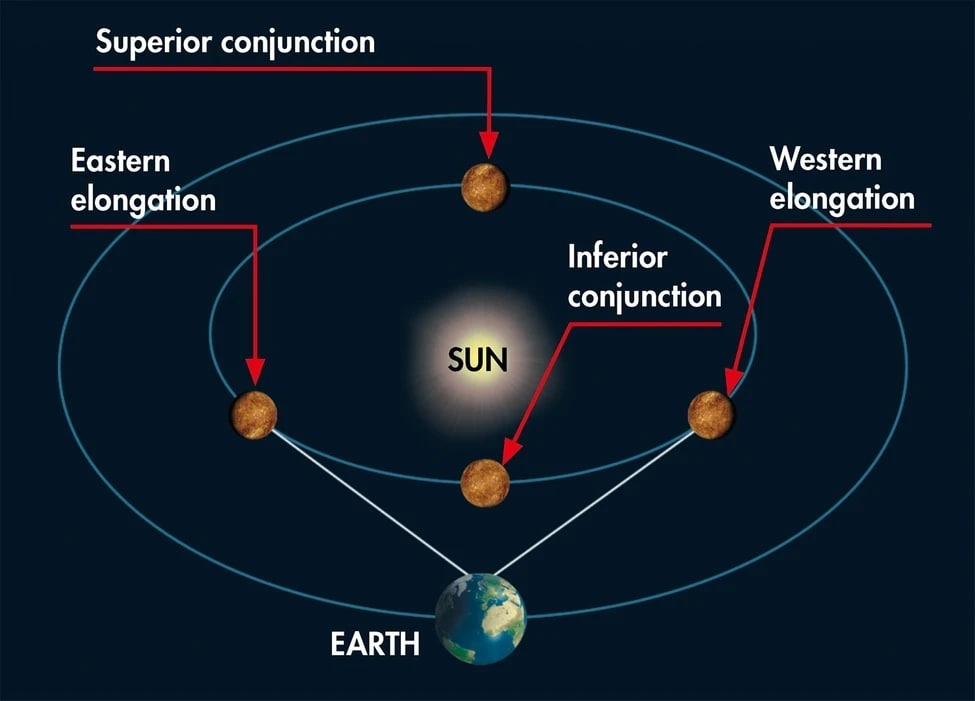 |
| Photo: Sky At Night Magazine |
The superior planets are those that orbit farther from the Sun than Earth. They’re not ‘tied’ to the Sun from our perspective and can be anywhere along the ecliptic.
Red-orange Mars (peak magnitude –2.9), whitish-orange Jupiter (mag. –2.9), and understated yellow Saturn (mag. +4.3) are all visible to the naked eye. Uranus and Neptune are not.
Uranus has a magnitude of mag. +5.7, hovering on the threshold of naked-eye visibility, but you’d need impeccable eyesight and pristine skies to stand a chance of spotting it.
Neptune (mag. +7.8) is simply too dim to see without binoculars.
All of this said, there are times when finding the planets isn’t easy. For one thing, even the superior planets may not be above the horizon all night long.
They can all disappear in the daylight sky, or may be stuck lingering just above the horizon.
From time to time, the planets are in conjunction with the Sun and are lost from view completely.
Nor do all planets shine at their peak magnitudes at all times – that depends on where they are in their orbits.
Superior planets tend to be brightest around opposition, when they are on the opposite side of the sky to the Sun.
With the inferior planets, the situation is more complex – they are brightest in certain crescent phases, but set relatively soon after (or rise only briefly before) the Sun.
The gap between the Sun setting or rising and Mercury/Venus doing the same is greatest at the points of greatest elongation, but they are dimmer on these occasions.
 |
| Photo: Sky At Night Magazine. |
If you think you have found a planet, but you’re really not sure, keep an eye on it for a few nights.
Remember, the word planet comes from the Greek word for ‘wanderer’. All of the planets move, or wander, relative to the background stars.
From night to night, you’ll see them in a different position, but the stars themselves will stay fixed to each other.
Of course, this effect is more pronounced the closer the planet is to Earth: Mars positively races across the sky compared to much more serene Saturn.
But with a little bit of practice, you’ll be able to find them.
When can I see my 'star sign' in the sky?There are 12 zodiac constellations — the ones we're all familiar with from astrology. Like the Sun and the planets, the zodiac constellations all lie in the ecliptic, so they're visible from every place on Earth where you can see the sun rise and set. This explains why they feature so prominently in ancient cultures. The zodiac constellations span the entire sky, so we never face all 12 of them at once. If you look up on a dark night, you should be able to see at least four zodiac constellations at any one time, lying across the ecliptic. During the night, as the Earth spins, each of these constellations will sink in the western sky, while others will rise in the east. All up, if you were to watch the sky for an entire night, you'd see up to 10 of the 12 zodiac constellations. The few that you can't see are in the patch of the sky blocked out by the Sun. So learning to spot the zodiac constellations, knowing what order they appear in (the same order given in horoscopes) and knowing where the ecliptic is, means you should be able to pick out an impressive four or more constellations that everyone's heard of. If you've read a horoscope you might expect to see Aries prominent in the March/April sky, and Leo in the July/August sky and so on, but this isn't the case. For example, you can't see Sagittarius in the night sky during mid-December because at this time of year the sun is positioned between Earth and the constellation, blocking our view. The same goes for the rest of the zodiac constellations; ancient astrologers assigned each zodiac sign to the time of year when the sun blocks that constellation from our view. So your "star sign" is actually your "sun sign". Does everyone see the same sky at night?As well as the Earth's position in space, the area of sky we can see at night is determined by our latitude — how far north or south of the equator we are. Places at the same latitude see the same view of the night sky. So while Adelaide and the Chilean capital Santiago are separated by the Pacific Ocean, they see the same constellations at night because the Earth is spinning them past the same stretch of southern sky. But people living on the same longitude can see quite different skies. Residents of Adelaide and Tokyo are on the same longitude, and see some of the same parts of the sky — the area around the ecliptic, like zodiac constellations and planets. But Tokyo is too far north to see objects near the South Celestial Pole, like the Southern Cross. And Adelaidians can't see things in the far northern sky, like Polaris, the North Star. It's because the earth is spherical, and the bulge around its middle blocks the north and south extremes from view. |
 How to Win Sympathy in the Workplace Base on 12 Zodiac Signs How to Win Sympathy in the Workplace Base on 12 Zodiac Signs Making friends and winning the hearts of people at work is the key to success for all zodiac signs. |
 How To Clean the Worst Water Stains From Toilet By Baking Soda, Vinegar, Borax How To Clean the Worst Water Stains From Toilet By Baking Soda, Vinegar, Borax There are many ways to clean a yellowed toilet for a long time, but choosing a method that is both safe for health and protects ... |
 How to Style Top 7 Ronaldo’s Hottest Hairstyles How to Style Top 7 Ronaldo’s Hottest Hairstyles Ronaldo has been a popular name for years, and his styles are unique and stand out from the rest of the footballers. Keep scrolling down ... |
 How to Style Top 7 Neymar’s Hottest Hairstyles How to Style Top 7 Neymar’s Hottest Hairstyles "Samba dancer" or "field magician" are the nicknames that the football world gives to one of the best players in the world at the moment ... |








